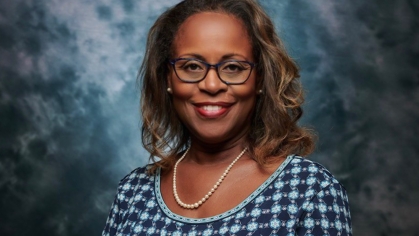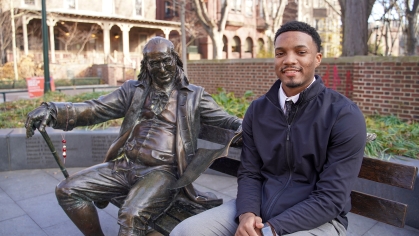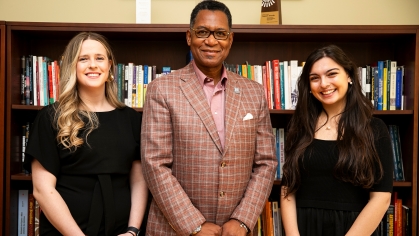Graduating Doctoral Student Studies Children’s Role in Remembering Colombia’s Turbulent Past
In 2016, Diana García had just started her Ph.D. in childhood studies at Rutgers University–Camden when news came from her native Colombia: the Revolutionary Armed Forces of Colombia and Colombian President Juan Manuel Santos had signed an historic peace accord, ending years of a bloody narcotics trafficking war that engulfed the country.
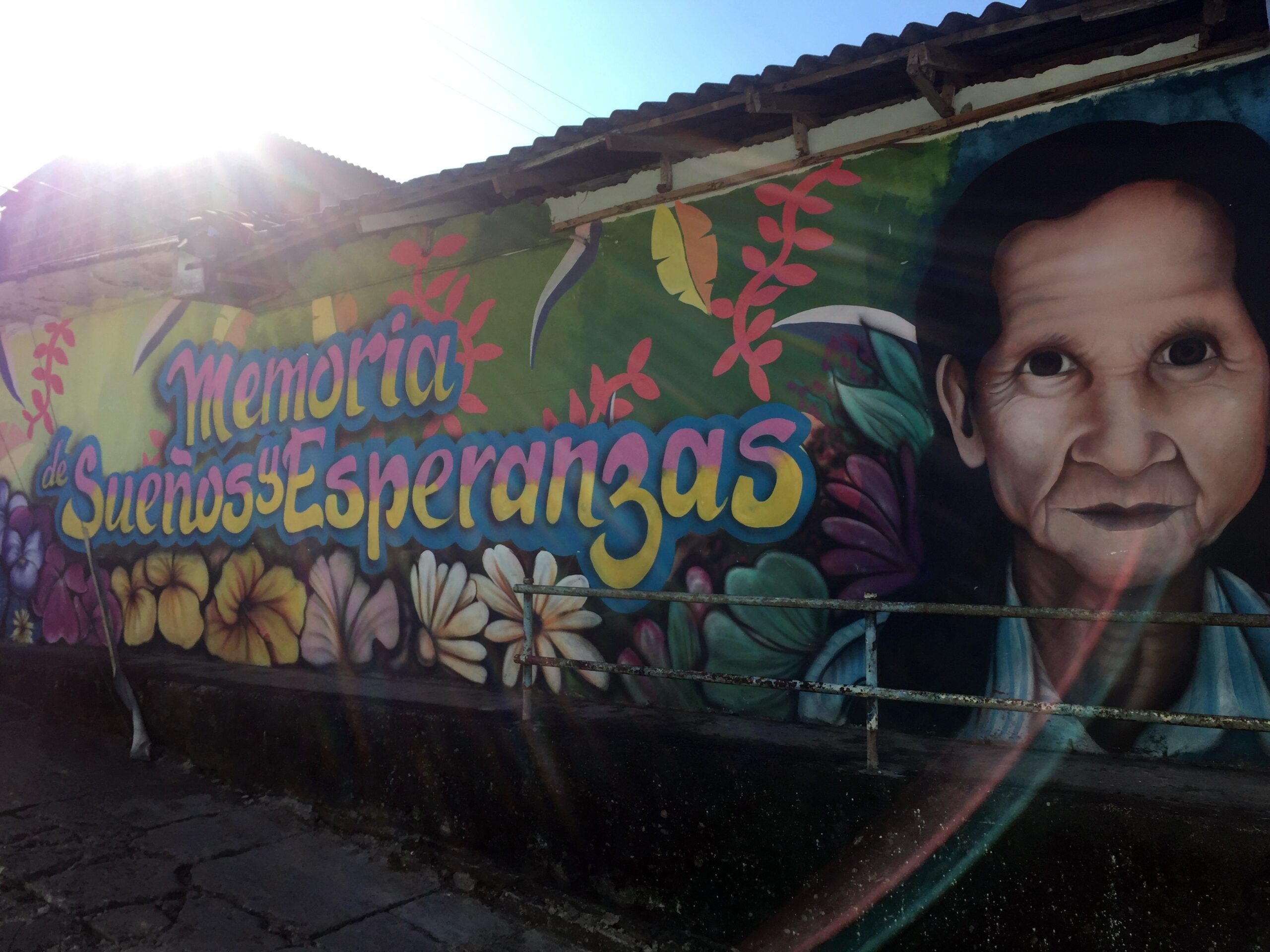
A mural that reads “Memory of dreams and hopes” in San Carlos. Photo: Diana García.
The childhood studies scholar watched curiously how, in this post-accord period – hailed as a new chapter in the country’s history – children were incorporated into a collective memory construction – in essence, a rethinking – of the past.
“In the field of childhood studies, one of the predominant ideas is the questioning of the notion that children are the future, and many policies – the ways that childhood is governed – are based on this notion,” explains the Collingswood resident. “But in my country, we are not thinking of children in terms of their futurity, but in terms of what children can do to make our past better. It’s a very interesting tension.”
García would dig a little further, learning how children were both victims and perpetrators of violence, as well as resilient, active peace builders – while discovering more about herself and her own assumptions – resulting in her dissertation, “Cultivating Hope: Children and Youth Participation in Collective Memory in Post Accord Colombia.”
García grew up in Bogotá, the capital of Colombia and the nation’s biggest city, during a time when the narcotics trafficking war was at its peak. For as long as she can remember, she was told not to go outside alone, and that people should not leave the city out of fear of being kidnapped.
“We wouldn’t go to the cinema or shopping malls when I was little because we were afraid they could be bombed,” she says.
At the same time, she continues, she grew aware of her “positionality.” She was a white mestiza, middle-class woman, whose parents were professionals, living in a very unequal and complex country, removed from the worst of the violence that gripped rural areas.
As García got older, government regimes came and went, but the fear of violence and an incessant feeling of being constrained still remained – and it made her think.
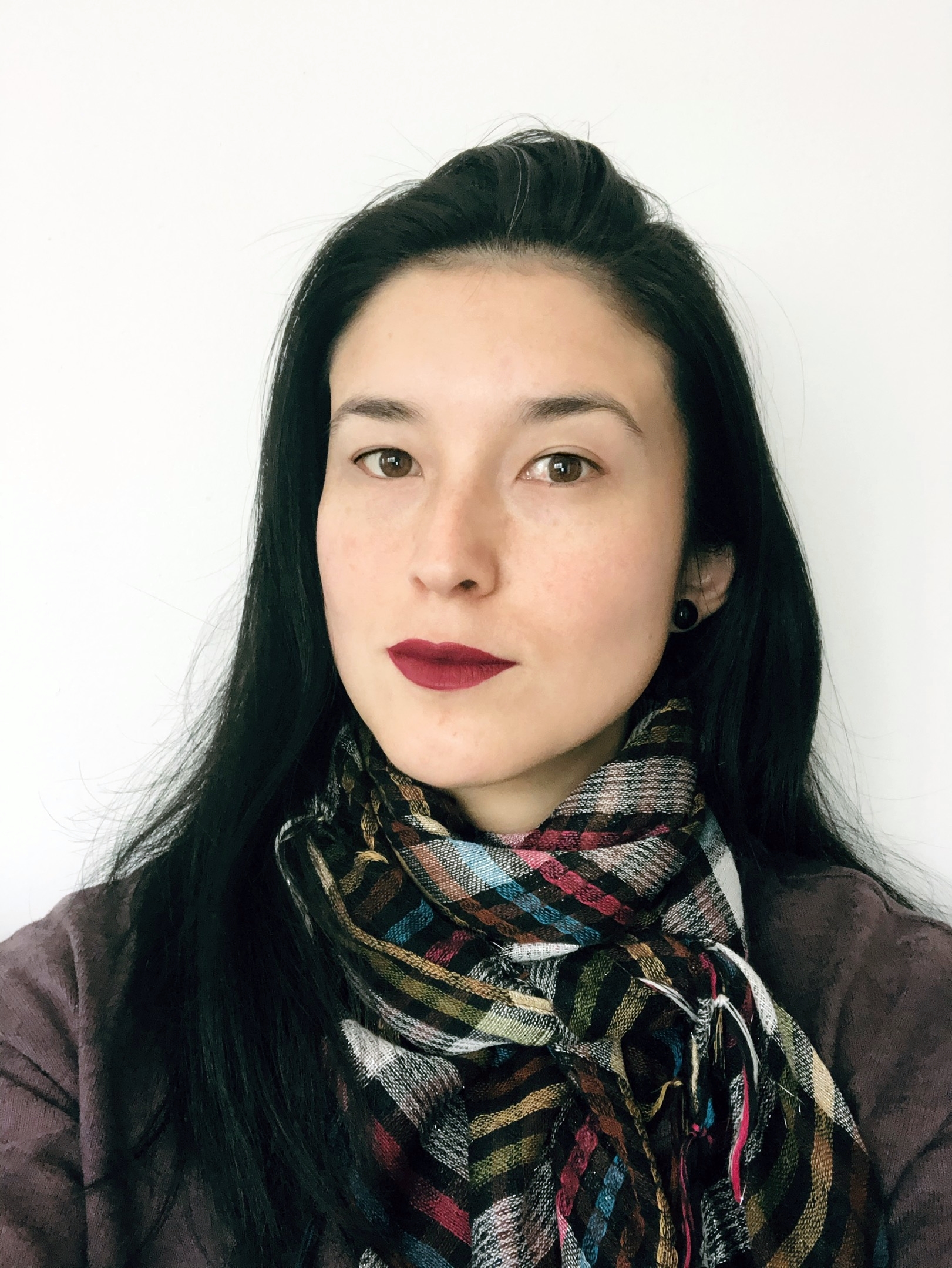
Upon graduating, García will begin a postdoctoral position at George Mason University.
“I was always very curious why Colombia, despite being one of the most beautiful countries in the world – with its amazing biodiversity, landscape, culture, and people – could never seem to move out of this cycle of violence,” she says.
Hoping to understand, García earned a bachelor’s degree in political science from Pontificia Universidad Javeriana in Bogotá. She then worked for several years as an educational software developer, writing children’s books on social studies.
“I was trying to create a narrative of Colombia’s history that would foster democratic values, so that children were better citizens,” she says. “Even then, I was trying to encourage those ideals.”
García then worked for the Center for Research and Popular Education/Peace Program, a nongovernmental organization and research center focused on human rights in Colombia, before earning a very prestigious scholarship from the Foundation for the Future of Colombia to earn her master’s degree in cognition and communication from the University of Copenhagen in Denmark. During that time, she returned to Colombia to conduct research on media literacy policy in rural areas of Colombia.
In 2015, her academic supervisor recommended the Ph.D. in childhood studies program at Rutgers University–Camden. At the advice of her parents, she took the leap and soon focused on children’s roles in collective memory construction, knowing that survivors of the armed conflict have long engaged in this construction.
“They have told their stories and kept their stories about what happened to them through songs, dancing, theater, weaving, painting, and storytelling,” she says.
Moreover, communities have created museums or places of memory for these artifacts, and she focused her research on two locations: a collective memory museum in Medellín, Colombia’s second-largest city, and a victim’s organization house in a rural town called San Carlos, located in the same area in Colombia.
At the museum, she explains, young people, typically college-age, serve as mediators, leading school tours for youth ages 8 to 23.
“This was an opportunity for me to converse with these youth who insert themselves in narratives of the armed conflict,” says García, who notes that the museums would try to inculcate a sense of responsibility in visitors to consider their roles in the conflict.
Among her findings, García witnessed firsthand how there are many areas of the world outside the United States and Europe where indigenous and Latinx children do not live according to the notions of what constitutes a traditional childhood. For instance, she notes, one young mediator with whom she spoke described how her upbringing and family history led her to become a political leader since the ripe age of six.
“So, what does that tell us about what it means to be a child in a marginalized area in Colombia?” she asks.
She also discovered how resilient people are in the face of great suffering and loss. She describes how some people had taken the remains of their loved ones from the ground – literally with their own hands – to give them a proper burial. Even then, these survivors didn’t give up, working toward peace and reconciliation with armed groups.
“It would be so much easier for them to continue on with their lives,” she says. “But, to continue to go back to that pain and transform it into community and collective change amazes me.”
Upon graduating, García will begin a postdoctoral position at George Mason University, where she will continue research on how children practice passive resistance to the armed conflict.
“I think it’s very important for international scholarship to be aware that children and youth in Colombia have been victims, but also active victims who have been trying to transform their communities for a very long time,” she says.
